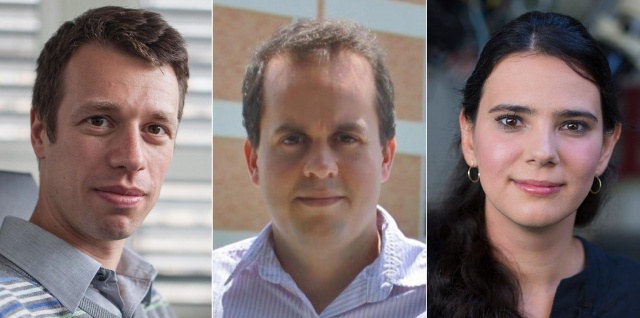Planet formation, fuel from gases, learning and attention: three Hungarian researchers among the winners of the 2016 ERC Starting Grants
Which areas of the brain cooperate during the process of learning? How can fuels be produced from flue gases? How does the formation of new planets commence in circumstellar disks of dust? The researchers of these subjects have won a considerable amount from the ERC’s Starting Grants call.
Three Hungarian researchers have won the Starting Grant call for applications of the European Research Council (ERC). All of them are research group leaders in the MTA’s ‘Lendület’ program: Balázs Hangya from MTA KOKI; Csaba Janáky from the University of Szeged; and Ágnes Kóspál from MTA CsFK; each have won a five-year financial support of about 1.5 million euros. As an ERC National Contact Point, the Department of International Relations at the Secretariat of the MTA also contributed to the preparation of the applicants.
 The 2016 winners of the ERC Starting Grant. From left to right: Balázs Hangya, Csaba Janáky and Ágnes Kóspál
The 2016 winners of the ERC Starting Grant. From left to right: Balázs Hangya, Csaba Janáky and Ágnes Kóspál Research plans in a nutshell
During his research, Balázs Hangya will be studying the ways in which the different subcortical systems of the brain, the so-called neuromodulatory systems, cooperate during the process of learning. Two types of neurons will be given special attention: cholinergic neurons, which play a role in learning and attention, and dopaminergic neurons, regulating the inner reward system of the brain. The research may bring significant results, for example, in understanding cognitive disorders experienced with Parkinson’s and Alzheimer’s diseases.
Csaba Janáky’s research program is founded on a photoelectrochemical method: reactions are carried out on electrodes based on semiconductors, with the help of electron-hole pairs generated by sunlight. The researchers produce bioinspired complex electrodes in which every component has its precisely defined role and task. Thus, an opportunity opens to scientifically-found technologies far more efficient and economical than before. The final aim is to create continuously running reactors (photoelectrochemical cells) which can promote the production of fuels from industrial sources of CO2, e.g. flue gases.
Ágnes Kóspál’s ERC project aims at providing realistic initial conditions for theories of planet formation by studying disks of matter around young newly-formed stars. The spectacular development in astronomical instrument technology over the past years has shown that the structure of circumstellar disks is much more complex than it was believed to be. Ágnes Kóspál will do research on how the inhomogeneous disk structure causes fluctuations at the pace of matter falling onto stars. Another key question is how the changeable matter flow and related sudden flares have an effect on the structure and mineralogical and chemical compositions of the circumstellar zone of planet formation.
New irons in the fire
The ERC Starting Grants call for proposals has been closed, but Consolidator Grants, inviting applications from internationally successful research group leaders and granting a maximum of 2 million euros for five years, are still in the process of being evaluated. With the first round of reviews being closed, out of 2,304 applications, six Hungarians have made it to the second round, four of them being MTA researchers. Interviews for the second round will take place in Brussels, in September and October.
The preparation of Hungarian applicants will be supported by training in September and an ERC Info Day on 16 September, organised by the Department of International Relations at the Secretariat of the MTA, mainly for young researchers planning to submit an ERC Starting Grant or Consolidator Grant application.
Hungary is still among the leaders of the region
Statistics for 2016 are not yet available, but based on last year’s data, it can be stated that, regarding applications, Hungary is still providing proof of distinguished activity among new EU members. In 2015, out of 21 grants within the EU13, four were won by Hungarians (i.e. the research project was carried out in a Hungarian accepting institution). As far as the number of applications is concerned, last year, Poland lead the list with 115 evaluated applications, followed by the Czech Republic (59), Hungary (49) and Romania (47), with the other new member countries lagging far behind.
Further statistical details can be found here and here.
Being excluded does not mean missing out
Getting into the second round of evaluations at the calls of the European Research Council is an excellent achievement in itself. Whoever made it to this level will probably have promising research plans worthy of support. To promote such research projects, NKFIH has announced a call for proposals inviting applicants who:
- submitted their application for ERC calls in 2014 and 2015;
- have a project with a ‘B’ classification in the second round of ERC StG or CoG calls and cannot submit a new application within one year of the issue of the ERC classification
or
- as a project leader, won support at an earlier ERC call, but could not submit an application for the next call for administrative reasons, i.e. they were requested to participate as a panel member in the given period.
Deadline for submission: 31st December, 2016



